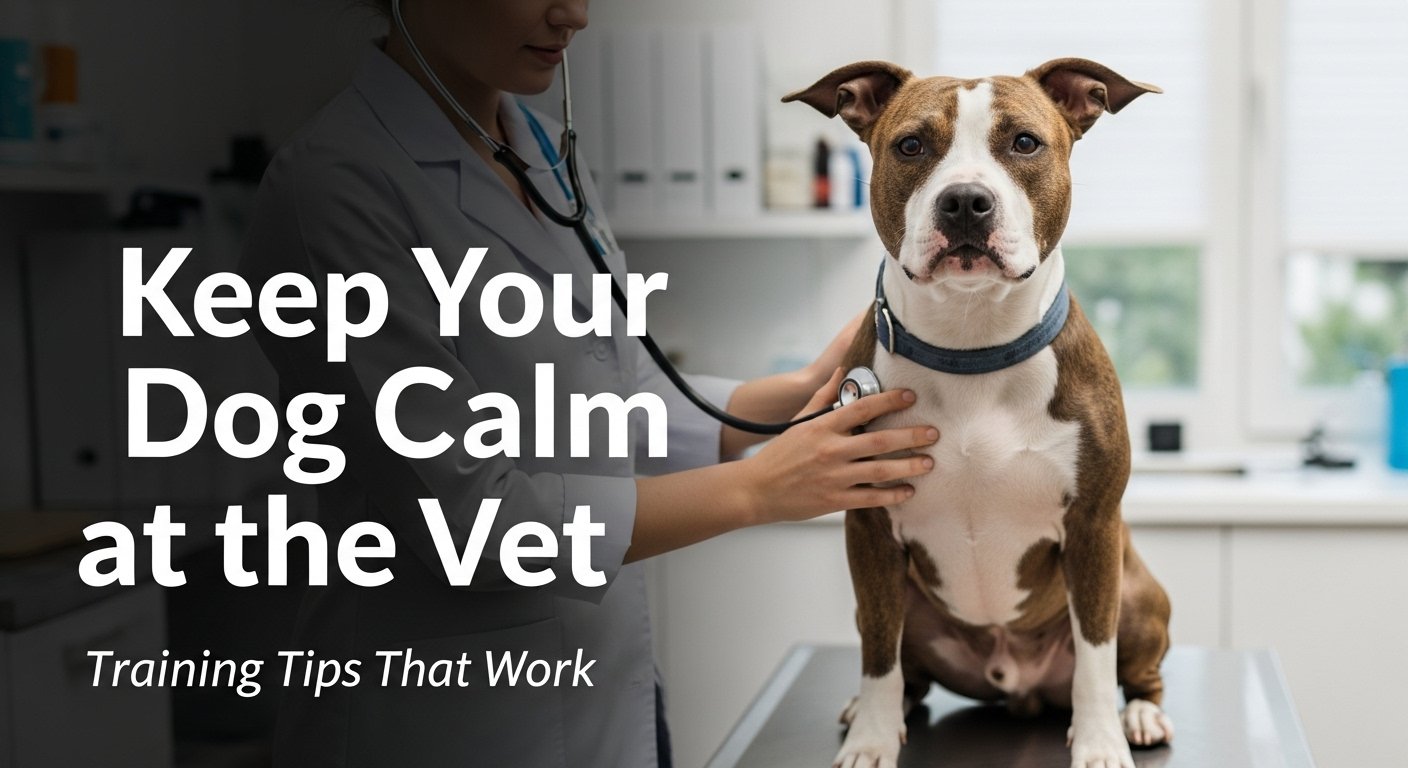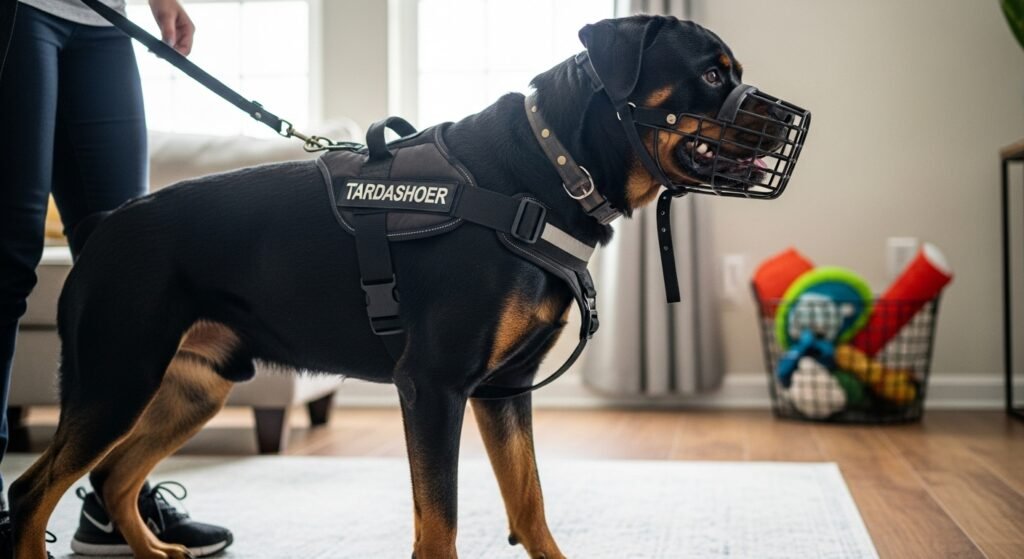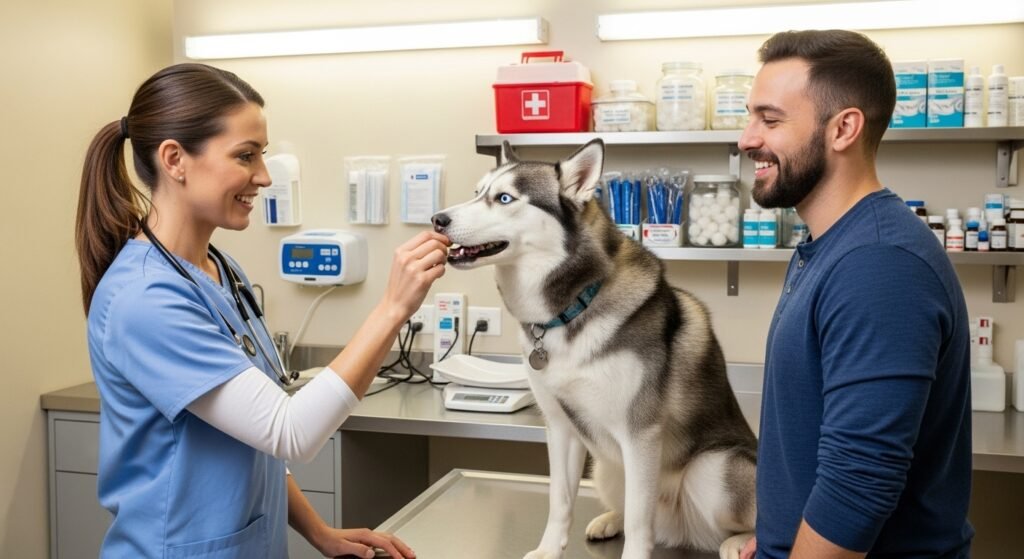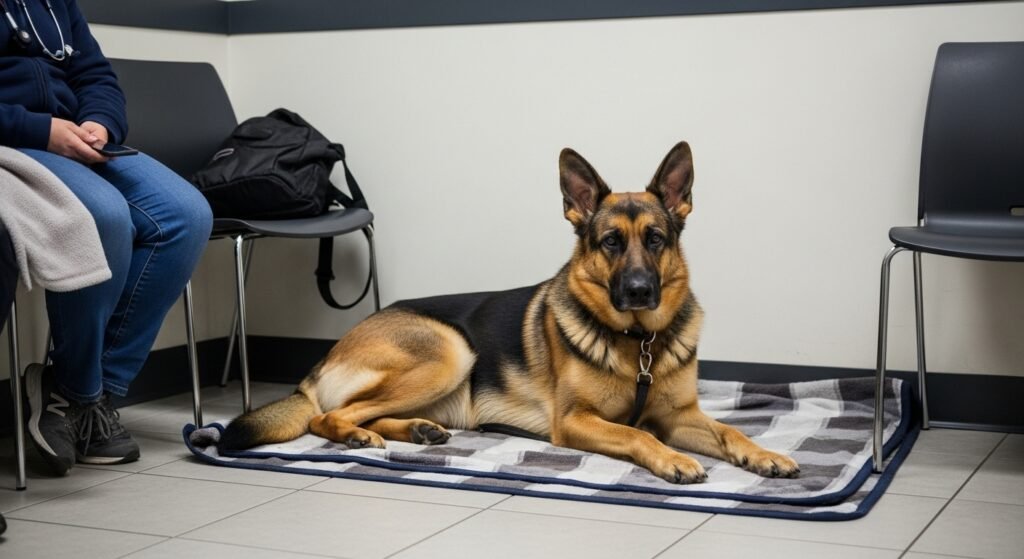
Teaching Your Dog to Stay Calm During Vet Visits
For many dogs, a trip to the vet feels less like a check-up and more like a scary adventure. New smells, unfamiliar people, and unusual handling can make even the calmest pup feel anxious. As a result, some dogs shake, pant, bark, or even resist entering the clinic.
As dog parents, we know these visits are essential for our pets’ health but how do we help them stay calm? The answer lies in training, preparation, and positive experiences.
This guide covers everything you need to know about teaching your dog to stay calm at the vet from at-home desensitization to what to do on the big day.
Why Dogs Get Anxious at the Vet
Vet clinics are full of “triggers” for dogs:
- Strange smells and sounds (other animals, cleaning solutions, medical equipment)
- Unfamiliar handling (being lifted, restrained, examined)
- Associations with past experiences (shots, thermometers, or loud noises)
- Separation anxiety if handled away from their owner
Understanding the “why” helps you better prepare your dog to cope.
Step 1: Desensitize Your Dog at Home
Training begins long before the vet visit. The more familiar your dog is with certain procedures, the less stressful they’ll be in the clinic.
Handling Exercises
Practice gently touching your dog’s:
- Ears (as if checking for infection)
- Paws (for nail trims)
- Tail and belly
- Mouth (for dental checks)
Reward calm behavior with treats. This helps them learn that being touched = good things happen.
Create Positive Associations
- Practice stepping onto a scale at home (or improvise with a box).
- Introduce your dog to a muzzle or cone gradually with rewards, even if they may not need one.
- Use play or treat time after “mock exams” to build positive reinforcement.

Step 2:Practice Car Rides
Some dogs associate the car itself with going to the vet, which heightens anxiety. To break the cycle:
- Take short, fun car rides that don’t end at the vet.
- Go to the park, a pet store, or just around the block.
- Reward calm behavior during and after the ride.
Over time, your dog won’t assume “car = scary vet.”
Step 3: Take Happy Visits to the Vet Step
Many clinics allow “happy visits,” where you bring your dog in just to:
- Meet the staff
- Walk through the waiting room
- Step on the scale
- Get treats and pets without any exams
These visits reframe the clinic as a positive place.
Step 4: Train Calming Commands
Certain commands help during stressful moments:
- “Sit” and “Down” – encourage calm positions
- “Stay” – teaches patience during handling
- “Touch” (nose to hand) – redirects focus away from stress
- “Settle” – lie calmly on a mat or blanket
Practice these at home, then in gradually more distracting environments.

Step 5: Bring Comfort Items
On the big day, pack a little “vet visit kit”:
- Favorite blanket or towel (smells like home)
- High-value treats (cheese, chicken, or special snacks)
- A toy for distraction
- Calming pheromone spray (like Adaptil) for the carrier or blanket
These familiar items reduce stress in the waiting area.
Step 6: Use Positive Reinforcement During the Visit
Throughout the visit:
- Reward your dog often, even for small moments of calm.
- Offer gentle praise and petting.
- Use a calm, confident tone dogs pick up on your emotions.
- Ask the vet to offer treats too building trust with the staff.

Step 7: Manage Anxiety with Tools
Some dogs need extra help, especially if they’re highly anxious. Options include:
- Pheromone sprays or collars
- Pressure vests (like Thunder Shirt)
- Calming supplements (vet-approved options with L-theanine or CBD)
- Prescription anxiety meds for severe cases (discuss with your vet)
Step 8: Be Your Dog’s Advocate
- Let the staff know your dog is nervous many vets are trained to adjust their approach.
- Ask for exams to be done on the floor if your dog hates tables.
- Request breaks if your pup gets too overwhelmed.
Your calm presence reassures your dog and helps staff work more smoothly.
Step 9: Aftercare & Reinforcement
Once home, make the day end on a positive note:
- Playtime, a walk, or favorite treat
- Lots of affection
- Calm rest in a familiar spot
This helps reinforce that vet visits aren’t all bad.

Common Mistakes Owners Make
- Forcing the dog into situations too quickly – causes trauma instead of progress.
- Skipping practice at home – makes the vet visit overwhelming.
- Showing your own anxiety – dogs sense your stress.
- Punishing nervous behavior – increases fear instead of teaching calm.
Final Thoughts
Vet visits will never be your dog’s favorite day, but they don’t have to be terrifying. With preparation, positive training, and a calm, supportive approach, you can teach your pup to handle check-ups with confidence.
The goal isn’t perfection it’s progress. Even small improvements make visits less stressful for your dog, you, and the veterinary staff.
Remember: patience + practice = a calmer, healthier dog.
Ready to Connect?
Enjoyed learning about big dog breeds? Join the Pets Fun Zone community — a growing space for U.S. pet lovers to:
Share photos, stories, and experiences
Ask questions and get advice
Discover recs for food, training, vet care, and more
Join us today at Pets Fun Zone and be part of a caring community of passionate dog lovers!
Let’s welcome all the gentle giants together.



